|
Wednesday, March 30, 2016
Fwd: The Venture Capital Elevator Pitch
Sunday, March 27, 2016
Fwd: 3 secret weapons for entrepreneurs
-------- Forwarded Message --------
| Subject: | 3 secret weapons for entrepreneurs |
|---|---|
| Date: | Sun, 27 Mar 2016 10:05:25 -0700 |
| From: | Peter Diamandis <peter@diamandis.com> |
| Reply-To: | peter@diamandis.com |
| To: | STeve <stevescott@techacq.com> |
Why are companies like Amazon, Uber and Google so successful? Each company has nailed three core fundamentals…
Fundamentals that I've personally dedicated 2016 to researching, learning and teaching…
They are (1) Hiring, (2) Culture and (3) Experimentation.
If you get these three core competencies right, you've got a shot at consistent entrepreneurial success.
If you can figure out how to source, hire, interview and recruit the best talent…
And then if you can stick that talent into a culture that sustains their passion and enthusiasm…
And finally, give that talent a mechanism for continuous experimentation and innovation…
You are likely to build a company that can create incredible value and solve very difficult problems.
Learning The Basics -- Building From First Principles
Over the course of my next few blogs, I am going to interview some of the greatest operators around today and share with you what I learn.
These entrepreneurs and executives know the ins and outs of creating these systems. We are going to talk about their successes, their failures, their challenges, their creative approaches, and much, much more.
My goal is to extract the tactics and tools you can use to create amazing processes around hiring, culture and experimentation.
Doing so will certainly not be easy -- if it was, every company would be operating at the level of these massively successful organizations.
However, I am dedicated to learning how to make this straightforward enough that any entrepreneur can begin trying these strategies.
At a high level, here are some of the key questions I want to answer and topics I will explore:
Hiring
- How do the best companies hire the best people?
- Why do "A's hire A's," but "B's Hire Cs"?
- How do you source, attract and hire the most talented people?
- What are the best interview questions and most unique interview styles?
- What are the best rapid screening mechanisms? How do you automate it?
- How do you gamify hiring?
- How do you ensure a new hire fits your culture and team?
- How do you test a new hire in a real-life work scenario?
- How do you test the quality of their work?
- Should you be ruthless about hiring the best people?
Culture
- What is culture?
- How do you create it? Can you create it? Who creates it?
- How do you maintain it? Evolve it?
- Why does every company need very strong core values?
- What are the best examples of a strong, productive company culture?
- How does Uber create culture? Amazon? Google? Apple?
- What are some examples of culture creating value?
- How do you invest in 'culture'?
Experimentation
- Why is experimentation so important?
- How do you create a culture of experimentation?
- How do you incentivize "failing forward"?
- Why should you try to kill your best ideas?
- Should experiments be kept secret?
- Why are hyper growth and experimentation so linked?
- Why should you worry about progress, rather than success?
- How do Amazon, Uber and Google enable experimentation?
These are only a few of the questions I'm asking. If you have others, tweet at me @peterdiamandis and my Entrepreneur-in-Residence @codyrapp with your own.
These questions, and yours, will become my focus.
Join Me
This is the sort of conversation we explore at my 250-person executive mastermind group called Abundance 360.
The program is highly selective. If you'd like to be considered, apply here.
Share this with your friends, especially if they are interested in any of the areas outlined above.
P.S. Every week I send out a "Tech Blog" like this one. If you want to sign up, go to Diamandis.com and sign up for this and Abundance Insider.
P.P.S. My dear friend Dan Sullivan and I have a podcast called Exponential Wisdom. Our conversations focus on the exponential technologies creating abundance, the human-technology collaboration, and entrepreneurship. Head here to listen and subscribe: a360.com/podcast
PHD Ventures , 800 Corporate Pointe, Suite 350, Culver City, CA 90230

Friday, March 25, 2016
Fwd: "Micro-Targeting" "Source Value" and other 2016 Traffic Getting Methods
From: Andy Jenkins <training@marketinggenesis.com>
Date: Thu, Mar 24, 2016 at 5:35 PM
Subject: "Micro-Targeting" "Source Value" and other 2016 Traffic Getting Methods
To: Steve <im1@bydf.com>
| If you haven't studied traffic acquisition this year, it's time for a Refresher Course. And when I say "Refresher Course", I really mean… "Here's a Dozen NEW Traffic Generation Strategies that you're probably not doing… or even know about." Here's the first of a great video series explaining "The Great Traffic Evolution" in detail. This is what the most current Traffic Experts are talking about in 2016 - and it's all covered in this video. You'll learn: - The "BCB" Foundation of Traffic-Getting - Common & Uncommon Traffic Mistakes - Mastering the "Traffic Game" in 2016 - Macro-Targeting - Micro-Targeting - Traffic Recycling - Conversion Outliers - Source Value Hierarchy - And Much, Much More! Become a student of the traffic generation process, so you can stay up to date about what's changing, every single day. This video is your first step in the right direction. Go Watch This Revealing Video Right Now!! XOXO, Andy
| ||
| You're receiving this newsletter because this email address was submitted to an opt-in form on one of our websites. When you no longer wish to hear from us, we'll be sad, but I'll always welcome you back when you're ready to work on your business again. Just Click Here to Unsubscribe. ~Andy Jenkins Please read our Affiliate Disclaimer: From time to time, I will promote, endorse, or suggest products and/or services for sale that are not my own. My recommendation is ALWAYS based on my personal belief that the product and it's author will provide excellent and valuable information or service. This may be based on a review of that product, my personal or professional relationship with that person or company, and/or a previous positive experience with the person or company who's product I am recommending. In most cases, I will be compensated via a commission if you decide to purchase that product based on my recommendation. In some cases, I will receive the product for free for review purposes, or just to use. In some cases, I have used that product to my personal satisfaction in my own businesses. | ||
Marketing Genesis , 7660 Fay Ave Ste H184, La Jolla, CA 92037
Friday, March 18, 2016
Fwd: Abundance Insider: March 18 Edition
In this week's Abundance Insider: Living immunotherapy treatment, bionic touch-restoring fingertips, and renewable plastic from plants and pollution.
Cheers,
Peter, Marissa, Cody, Maxx, Kelley and Greg
P.S. Send any tips to data@diamandis.com, and send your friends and family to this link to subscribe to Abundance Insider.
The Future of Farming May Live Inside This Box

What it is: Freight Farms is a Boston-based startup that's converting old shipping containers into what it calls "Leafy Green Machines," or hydroponic farms that represent an acre of farmland. One such setup at a local school produces 800 heads of lettuce for the cafeteria -- using 90% less water, no soil or pesticides, and a 320-square-foot space, according to Fox Business.
Why it's important: By dematerializing and demonetizing farmland, Freight Farms hopes to make sustainable, local, healthy, organic food accessible -- and help a new wave of people contribute to the food system.
Spotted by Clyde Dennis
Scientists Restore Patients' Vision With Eye Lens Grown From Stem Cells

What it is: Joint research from the University of California, San Diego School of Medicine and Shiley Eye Institute has yielded an eye lens restoration treatment that uses the patient's own lens epithelial stem cells to regenerate functional lenses. In a small human trial of pediatric cataract patients, the technique restored vision to all 12 patients after three months.
Why it's important: Age-related cataracts is the leading cause of blindness in the world, affecting over 20 million people in the U.S. alone. Current surgical techniques leave many patients with suboptimal vision, and a large portion must still wear corrective eyewear to read or drive. By using the patient's own stem cells to regenerate superior eye lenses in situ, researchers eliminate current surgical hurdles like pathogen transmission and immune rejection.
Spotted by Peter Diamandis
Renewable Plastic From Carbon Dioxide and Plants

What it is: Can pollution and plants be used to make plastic? Stanford scientists have just done that with PEF, or polyethylene furandicarboxylate, which is made from ethylene glycol and a compound called 2-5-Furandicarboxylic acid (FDCA). Unlike PET plastic, which is partially derived from refined petroleum, PEF can be sourced from biomass -- think grass, weeds and other agricultural waste.
Why it's important: The Stanford researchers are applying this chemistry not just to sustainable plastic production, but for renewable fuels and other compounds that rely on hydrogen and carbon dioxide.
Spotted by Bill Shevlin
Amputee Feels Texture With a 'Bionic' Fingertip
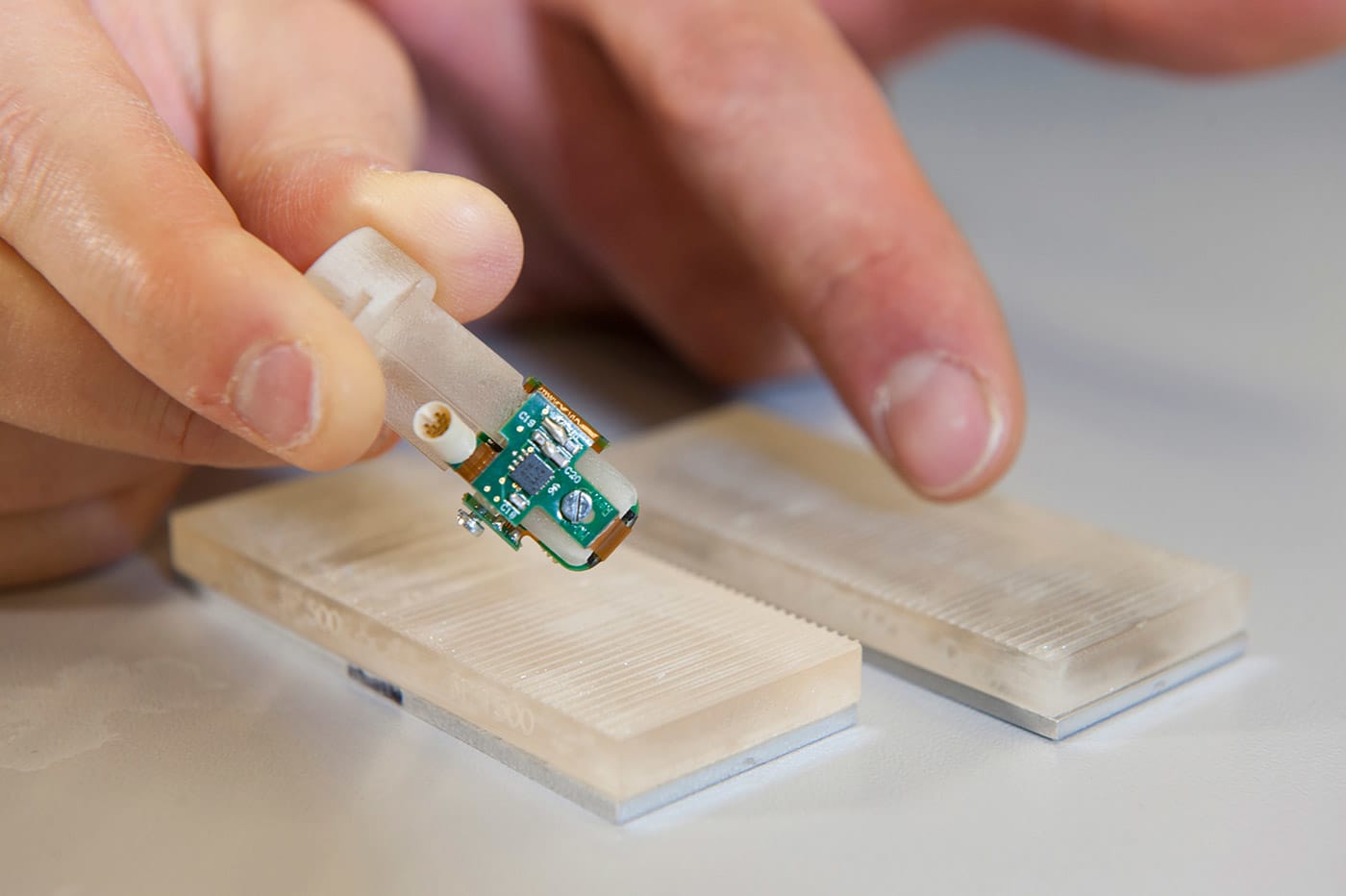
What it is: EPFL and SSSA researchers have created an artificial "bionic" fingertip that uses electrical signals to help amputee Dennis Aabo Sorensen recognize texture. "The stimulation felt almost like what I would feel with my hand," says Sorensen. "I felt the texture sensations at the tip of the index finger of my phantom hand."
Why it's important: Neuroprosthetics research can help us understand how the brain creates the human sense of touch -- knowledge we'll need to accelerate the development of artificial touch in robots used for surgery, manufacturing and rescue.
Spotted by Peter Diamandis
Team SGS Geostat Wins the Integra Gold Rush Challenge
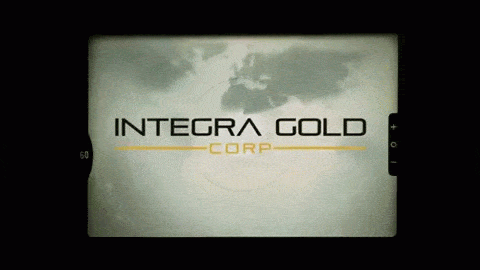
What it is: SGS Geostat has won the Gold Rush Challenge, beating out four other finalists in a quest to find gold across Integra Gold Corp.'s Lamaque project in Quebec using geological data. To win the HeroX-hosted challenge, and the $500K purse, SGS Geostat used geostatistical methods, machine learning and virtual reality to identify high-value targets.
Why it's important: Peter has written extensively about the 2001 Goldcorp Challenge, and this is even more evidence of the power of incentive competitions. Identify the problem, supply the data, and let teams around the world compete for the best solution.
Spotted by John Collins
Can Large-Scale Solar Power Storage Become a Reality?

What it is: Stanford materials science engineers have discovered that metal-oxide solar cells are better energy storage candidates than silicon solar cells. Silicon cells, while excellent at converting ultraviolet and visible light into electricity, waste heat-bearing infrared light. Metal oxides, as the researchers discovered, actually became more efficient as they got hotter -- ultimately doubling the rate of hydrogen generation.
Why it's important: Metal oxides like titanium oxide, iron oxide and bismuth vanadium oxide could hold the key to creating a cost-effective, carbon-neutral energy cycle and large-scale solar power storage.
Spotted by Bill Shevlin
Living Factories of the Future

What it is: Christina Smolke and her colleagues at Stanford are engineering yeast to transform it into a biofactory -- producing the pain relief drug hydrocodone with just sugar as a raw ingredient. This article describes Smolke's research, other success stories in synthetic biology and a summary of major opportunities in the field.
Why it's important: As the cost of DNA sequencing continues to plummet, researchers have more genetic data than ever to mine for valuable insights. Synthetic biologist Michael Jewett illustrates the promise of this field succinctly: "Imagine a world where we could adapt biology to manufacture any product renewably, quickly and on demand."
Spotted by Ian Pitchford
Immunotherapy Treatment Yields Dramatic Remissions in Blood Cancer

What it is: The Fred Hutchinson Cancer Research Center has pioneered a breakthrough "living" immunotherapy treatment that engineers the patient's immune cells so that they target specific molecules on cancer cells. Thus far, researchers report the treatment has had "dramatic" remissions -- even on patients with tumors that have been resistant to high-dose chemotherapy.
Why it's important: By engineering our own immune cells, we're able to kill off cancer cells without conventional chemotherapy, improving patient outcomes while also decreasing side effects. "The results are simply astounding," said Stanley Riddell, MD. "We are treating patients with advanced leukemia and lymphoma that have failed every conventional therapy and radiation therapy, including transplants... in a single treatment. Within weeks, the patient goes into remission."
Spotted by Peter Diamandis
What is Abundance Insider?
This email is a briefing of the week's most compelling, abundance-enabling tech developments, curated by Marissa Brassfield in preparation for Abundance 360. Read more about A360 below.
Want more conversations like this?
At Abundance 360, Peter's 250-person executive mastermind, we teach the metatrends, implications and unfair advantages for entrepreneurs enabled by breakthroughs like those featured above. The program is highly selective and we're almost full, but we're still looking for a few final CEOs and entrepreneurs who want to change the world. You can apply here.
Know someone who would benefit from getting Abundance Insider? Send them to this link to sign up.
PHD Ventures , 800 Corporate Pointe, Suite 350, Culver City, CA 90230

Fwd: My speech-writing formula
From: Michael Port <questions@heroicpublicspeaking.com>
Date: Fri, Mar 18, 2016 at 8:05 AM
Subject: My speech-writing formula
To: im1@bydf.com
|
Monday, March 7, 2016
Fwd: 3D Printing & Technology Convergence
Unexpected convergent consequences… this is what happens when eight different exponential technologies all explode onto the scene at once.
This blog (the 5th of 7) is a look at 3D printing. Future blogs will look at other tech areas.
An expert might be reasonably good at predicting the growth of a single exponential technology (e.g. 3D Printing), but try to predict the future when A.I., Robotics, VR, Drones, and Computation are all doubling, morphing and recombining… You have a very exciting (read: unpredictable) future. This year at my Abundance 360 Summit I decided to explore this concept in sessions I called "Convergence Catalyzers."
For each technology, I brought in an industry expert to identify their Top 5 Recent Breakthroughs (2012-2015) and their Top 5 Anticipated Breakthroughs (2016-2018). Then, we explored the patterns that emerged.
[ Click to Tweet about this (you can edit before sending): http://ctt.ec/KWYB9 ]
3D Printing – Context
At A360 this year, my expert on 3D Printing was Avi Reichental.
Avi is the Founder and CEO of XponentialWorks, an expert advisory, venture investment and incubation ecosystem company that is focused on monetizing exponential tech innovation and business model disruption. For 12 years, Avi was the CEO of 3D Systems, the largest publicly traded 3D printing Company in the world. A dear friend and brilliant entrepreneur, Avi is also part of our core faculty in additive manufacturing at Singularity University.
Before we dive in, here's some more context around 3D printing:
3D printing, also known as additive manufacturing, is the process of printing, layer by layer, any three-dimensional object based on a digital file.
In a 3D printer, one or more print heads extrudes a small amount of materials in precise locations to build objects point by point from the bottom up.
Today we can 3D print in full color and in over 250 different materials ranging from titanium to rubber, plastic, glass, ceramic, leathers and even chocolate.
3D printers can create very complex structures of mixed materials and print almost anything, from jet engines to jewelry to houses and even medical prosthetics.
3D printing transforms the entire manufacturing process. Customization and complexity come for free and large-scale custom manufacturing is no problem.
Additive manufacturing also saves tremendous costs, requiring as little as 10% of the raw materials expended in traditional manufacturing and eliminating the need for inventory.
Ultimately, 3D printing dematerializes, demonetizes and democratizes manufacturing and turns us all into creators.
If you or your customers are in the business of making anything, 3D printing is on the road to disrupting your industry and your business.
Top 5 Recent 3D Printing Breakthroughs: 2013 - 2015
Here are the recent breakthroughs Avi identified as important to 3D printing from 2012 - 2015.
1. 3D printing in full color with 250+ different materials and composites.
Avi explains, "We can now print in full color, which means more than a million different color combinations in a single print. We can also print in 250 different materials. This has never been possible, and with the ability to print many, many new materials and combinations thereof, the creative opportunities are almost limitless."
2. Customized mass production of 3D printed medical devices.
Avi explains, "We've seen a rise in the number of bespoke customized medical devices and parts. Not only are key 'implants' like full knee and hip replacement parts customized to you, but the surgical instruments, the jigs, the fixtures, the incision tools, etc. are 3D printed to fit you. One example is hearing aids. These devices, each of which fits into a uniquely shaped ear canal, have been 3D printed for nearly eight years."
3. Explosion of metal 3D printers in aerospace and automotive industries ushers in an era of 'mass complexity.'
Today, we have the ability to print with more than 20 different alloys. Companies like GE and SpaceX are 3D printing jet and rocket engines. My company Planetary Resources 3D prints parts of our ARKYD satellites.
This capability unlocks billions of dollars in industrial applications for 3D printing.
4. High-speed 3D printing drives manufacturing at a convincing scale.
Speed is a big deal in 3D printing. If it took two days to print a small object, consumers would never adopt the technology. If it took just two minutes, then everyone would need to have one.
Avi elaborates, "There have been tremendous improvements in speed. The prediction now is that speed is not just going to double every couple of years, but speed is probably going to go 10x, 50x, 100x in the next 5 years. There are quite a few successful companies out there that are demonstrating today that they can get to convincing scale with 3D printing that will be at least a hundred times faster than it is today."
5. Democratization of the means and skills for everyone to create and make."Over the last few years, we've seen a very significant democratization of 3D printing technology," says Avi. "This democratization is about the systematic removal of all user friction in the 3D printing process, starting with complex CAD (Computer-Aided Design) and 3D modeling. The connectivity of devices and the cloud, the ability to search and download images, to have intelligent search engines that are searching three-dimensional models, the ability to price and share and source and print, etc. All of this represents the democratization that makes 3D printing accessible to the other 99 percent, not just to the designers."
This is the user interface moment for 3D printing – when it's easy enough and fun for everybody to use.
So what's in store for the near future?
Top 5 Anticipated 3D Printing Breakthroughs 2016 - 2018
Here are Avi's predictions for the most exciting, disruptive developments coming in 3D printing technology over the next three years. As entrepreneurs and investors, these are the areas you should be focusing on, as the business opportunities are tremendous.
1. Personalized nutrition made possible with new breed of 3D printers.Personalized food and nutrition is about to get really exciting. As Avi illustrates, "At the end of the day, your home food printer will create a personalized nutrition bar based on your needs in that moment, containing the amount of proteins, carbs, vitamins and supplements needed in that moment."
Next, we'll see 3D printing playing in the pharmaceuticals space, where your medical pill is printed (compounded and created) specifically for your needs that day.
2. Printed shoes and textiles disrupt fashion, apparel and retail industries.
Fashion is going to be disrupted in a big way. "Through the combination of scanning, digitizing, computing, sensing, active performance monitoring, and mixed materials, we will be able to print fully functional clothing and wearable devices," says Avi.
Shoes will be tailor-made based on your posture, your stance, and your arch. Accessories will be customizable and immediately printable. Everything will be perfectly designed to fit your body.
You'll be able to see a beautiful new dress designed in Paris that morning, buy it, and print it in your closet to wear that evening.
3. Printing of finished mixed-material devices (rubber, structure, wiring) – e.g. electronics, cars, houses…
"Today you can 3D print a toy truck with rubber tires, metal chassis, clear plastic or glass windshield in a single print. The next level of this," Avi says, "is to print a fully functional device with circuits and sensors and logic."
4. 'Factory in a Box' combines additive + subtractive manufacturing, delivering 100x speeds.ing CNC machining, additive layering, and even injection molding. It will all be unified into boxes that will become the factory of the future."
5. 3D printing of human organs and tissues.
Researchers have convincingly demonstrated that simple organs and complex tissues can now be 3D printed.
By harvesting our own stem cells, multiplying them, and then depositing them onto collagen scaffolding of the desired organ, these miraculous cells grow into a fully implantable, functional organ.
Avi predicts, "In seven to 10 years, we will be in the business of replacing parts and organs that our bodies will not reject, and then perhaps we'll have organs that were even better than the ones we were born with."
At the same time, why not "print" a biosensor into your liver or heart to monitor its health and provide continuous data?
Join Me
The implications of these converging trends are staggering.
There has never been a more exciting time to be alive.
This is the sort of conversation we explore at my 250-person executive mastermind group called Abundance 360.
The program is highly selective. If you'd like to be considered, apply here.
Share this with your friends, especially if they are interested in any of the areas outlined above.
P.S. Every week I send out a "Tech Blog" like this one. If you want to sign up, go to Diamandis.com and sign up for this and Abundance Insider.
P.P.S. I've just released a podcast with my dear friend Dan Sullivan called Exponential Wisdom. Our conversations focus on the exponential technologies creating abundance, the human-technology collaboration, and entrepreneurship. Head here to listen and subscribe: a360.com/podcast
PHD Ventures , 800 Corporate Pointe, Suite 350, Culver City, CA 90230

Friday, March 4, 2016
Fwd: Abundance Insider: March 4 Edition
In this week's Abundance Insider: Virtual reality physical rehab, phones with a 7-day battery life, and artificial skin made from everyday office supplies.
Cheers,
Peter, Marissa, Cody, Maxx, Kelley and Greg
P.S. Send any tips to data@diamandis.com, and send your friends and family to this link to subscribe to Abundance Insider.
New Wi-Fi System Uses 10,000 Times Less Energy
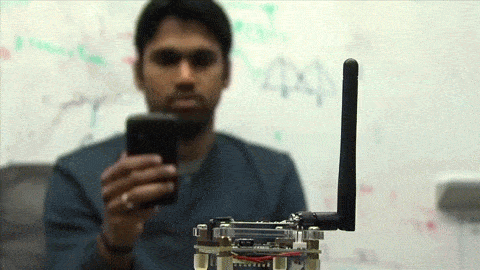
What it is: A team of University of Washington computer scientists and engineers has created a new Passive Wi-Fi system that can transmit Wi-Fi at bit rates of up to 11 megabits per second while using 10,000 times less power than existing energy-efficient platforms like Zigbee and Bluetooth Low Energy. "We wanted to see if we could achieve Wi-Fi transmissions using almost no power at all," said co-author Shyam Gollakota, a UW assistant professor of computer science and engineering. "That's basically what Passive Wi-Fi delivers. We can get Wi-Fi for 10,000 times less power than the best thing that's out there."
Why it's important: Wireless communication that requires virtually zero power enables a true Internet of Everything. Another promising feature is that because the sensors in this system are transmitting Wi-Fi, they immediately work with any Wi-Fi enabled device -- no special equipment needed.
Spotted by Dan Swift
Roll Your Own Blockchain With Hyperledger

What it is: Hyperledger is a joint project from some seriously heavy hitters, including IBM, Wells Fargo, the London Stock Exchange and JP Morgan, that lets you test and deploy your own blockchain-like software in real-world situations. Interestingly, Wired reports that the Depository Trust & Clearing Corporation, which oversees the stock settlement system used on Wall Street, is also involved in the project. While Hyperledger is still under development, IBM recently debuted a cloud computing service that lets anyone try it out for free.
Why it's important: This article outlines many of the top blockchain initiatives, including Hyperledger, that aim to make the blockchain ubiquitous and easy to use. But it also illustrates how business leaders should think about disruptive technologies by closing with this quote from Arvind Krishna of IBM Research: "Ideas can be very powerful. Once an idea gets out there -- at least in today's world -- you're not going to stop it from propagating. Those that embrace it with speed and conviction will be better placed for whatever disruption follows -- as opposed to being disrupted."
Spotted by Spencer E
NHTSA: Google's Autonomous Cars Count as Drivers
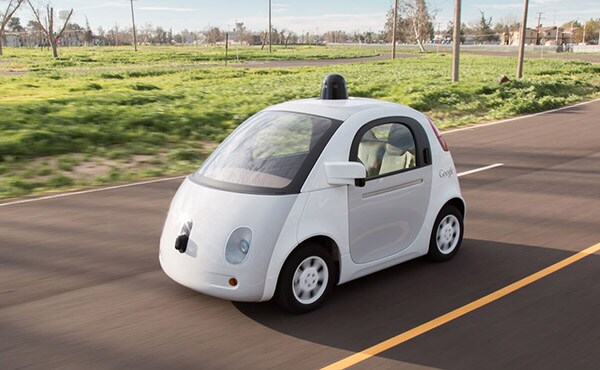
What it is: Legally speaking, the artificial intelligence used in Google's autonomous cars qualifies as an actual driver. That's the latest ruling from the National Highway Traffic Safety Administration, which reads, "NHTSA will interpret 'driver' in the context of Google's described motor vehicle design as referring to the [self-driving system] and not to any of the vehicle occupants. We agree with Google its [self-driving car] will not have a 'driver' in the traditional sense that vehicles have had drivers during the last more than 100 years."
Why it's important: While we still have unanswered legal questions, this development is a big step for autonomous vehicle manufacturers. "[If] NHTSA is prepared to name artificial intelligence as a viable alternative to human-controlled vehicles," explained Karl Brauer, a senior analyst at Kelley Blue Book, to NDTV, "it could substantially streamline the process of putting autonomous vehicles on the road."
Spotted by Peter Diamandis
Inside a 61-Mile Drive With Tesla's Autopilot
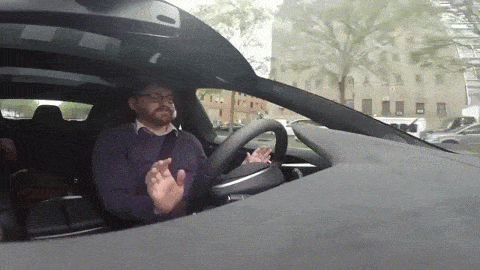
What it is: Tech analyst Daniel Sparks recently used Tesla's Autopilot mode on the highway to see "how far [he] could make it on the highway without taking control." Over the course of a 61-mile drive, he didn't steer or use the pedals; the only interaction he had with the car was when he tapped the blinker to signify a lane change. The experience, as he describes in this article, was "shocking" -- in a good way.
Why it's important: Sparks' Autopolit experience convinced him that autonomous production cars are coming "sooner than we think." Tesla's latest features are a promising preview of some of the interim steps we'll take towards fully autonomous driving while enabling devices like hardware sensors and fleet learning technology continue their exponential growth.
Spotted by Peter Diamandis
Samsung to Build 256GB Smartphone Chips

What it is: Samsung recently announced its plans to mass-produce 256GB embedded chips for smartphones. Such chips use the Universal Flash Storage 2.0 standard, which gives them read speeds of 850 MB/s -- which according to Engadget is almost twice that of SATA-based SSDs.
Why it's important: Faster computers are being used to build faster computers -- and that includes smartphones. 256GB storage capacity means that we'll be able to store ever-larger files like 4K movies and 360-degree videos on our mobile phones -- a crucial capability for virtual reality to really take off.
Spotted by Cody Rapp
Project Empathy Gets Schools in Developing Nations Connected & Online
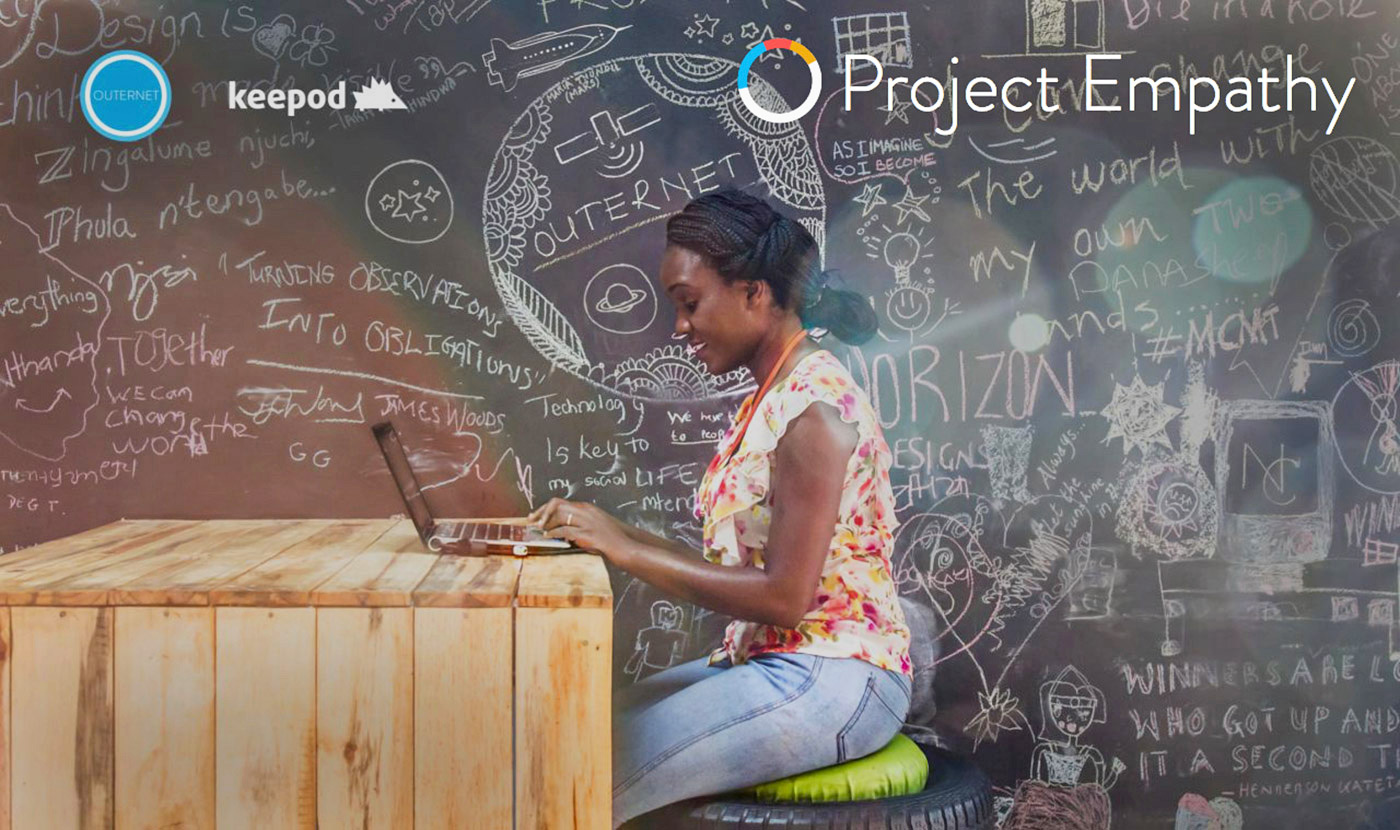
What it is: Project Empathy is a program that connects classrooms with Internet access to classrooms that don't -- including those in developing nations. Participating schools purchase "kits" -- a box with a Raspberry Pi, a 64 GB USB drive and complementary components -- and then students load those devices up with Web content. The boxes get delivered and installed by Project Empathy partners in classrooms without Internet access, along with a special Twitter account so that they can share feedback with the host classroom in a data-efficient fashion. Outernet, a startup that hopes to give the developing world Internet access via LEO satellites and geostationary satellites, is behind the project, which launched on Feb. 1.
Why it's important: Per its website, Project Empathy gives youth the power to influence a global service project by determining what educational content to load up in each of kit. This alone will yield tremendous breakthroughs in knowledge-sharing, but considering Outernet's business plan, this is also an effective way to gather data in currently-unconnected markets.
Spotted by Marissa Brassfield
Meet the Book-Sized, Protein-Powered Biocomputer
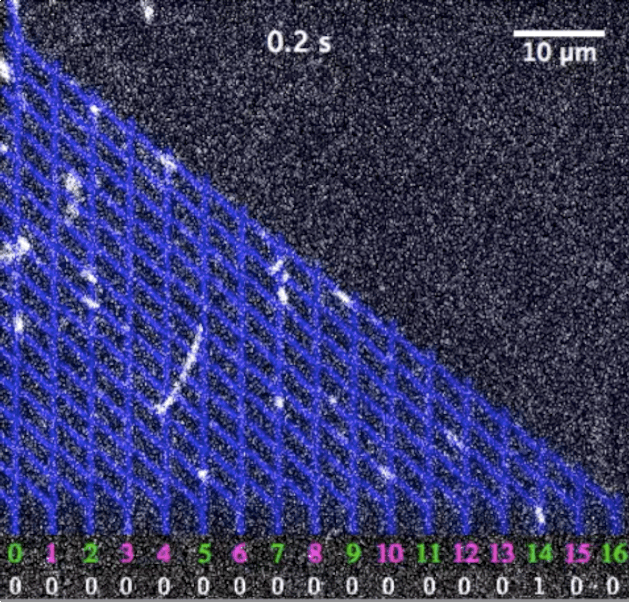
What it is: Lund University researchers have created a protein-powered (ATP) biocomputer that could revolutionize how we do cryptography and "mathematical optimization." The biocomputer is about the size of a book and uses under 1 percent of the power a traditional transistor does to do one calculation step, according to Lund's Heiner Linke and Engadget.
Why it's important: Today's supercomputers have two key drawbacks to their raw power: energy usage and physical footprint. This energy-efficient, book-sized biocomputer solves both of these issues -- and if the researchers are right, it won't be long until this biocomputer's performance scales to accommodate complex tasks.
Spotted by Marissa Brassfield
Moth-Inspired Solar Cell Produces Power Without Light
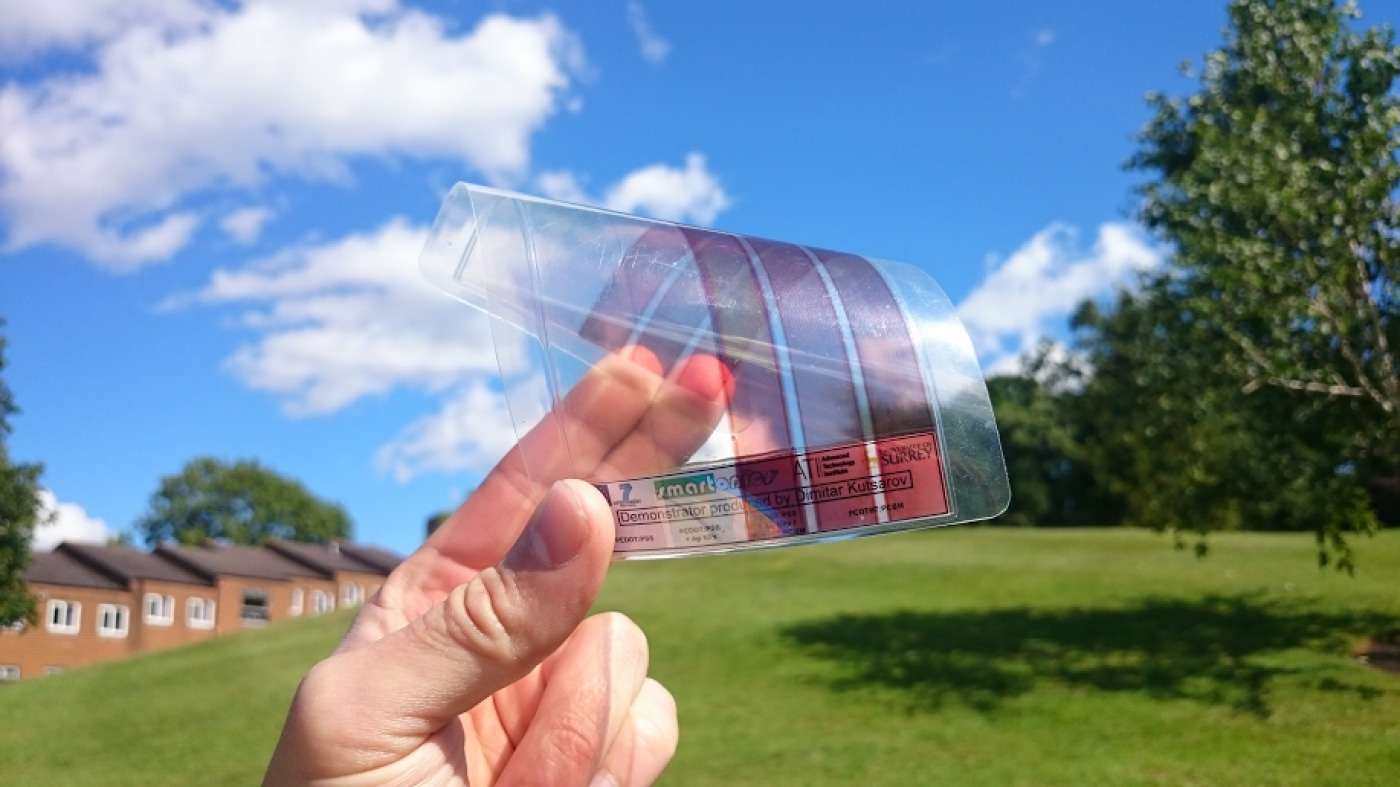
What it is: University of Surrey researchers drew inspiration from the humble moth to create a graphene-based solar cell that can produce energy from sunlight and any device that produces radio waves or microwaves. Like a moth's eye, the cell traps electromagnetic waves; from there, special antennae convert them into usable electricity.
Why it's important: Imagine tiny "solar" panels that can generate energy even if the panels are indoors or housed in a spot that doesn't get any sunlight at all. This also represents the exciting convergence of new R&D capabilities, materials science advancements, and design and interface inspiration from the natural world.
Spotted by Marissa Brassfield
Brain-Reading Training Tool Knows When You're in Information Overload
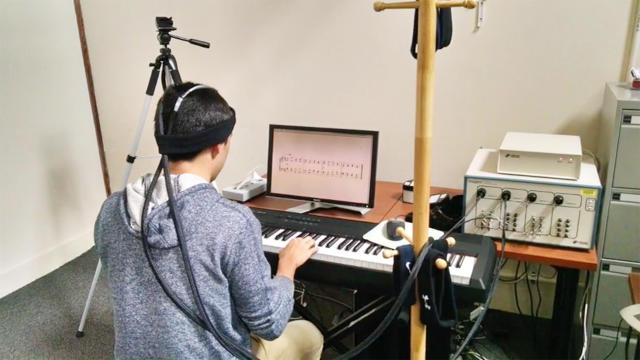
What it is: A Tufts University Ph.D candidate has created a music instruction tool that can read your brain and determine exactly when to give a student more or less instruction. Brain Automated Chorales (BACh for short) is a brain-computer interface that measures cognitive load, or how hard the wearer's brain is working on a specific task, based on blood flow in the prefrontal cortex. In preliminary studies, beginner piano students using the BACh system to learn new songs performed better -- more correct notes, fewer mistakes, faster learning curve -- than those who didn't.
Why it's important: This brain-computer interface revolutionizes how we teach others new skills, but it's also a promising example of the future of BCIs. "It's very hard for people to be self-reflective about their own cognitive state and workload," Beste Yuksel explained to Fast Company. "[BACh is] the first time we have this objective physical measurement of cognitive load that helps people learn in real time."
Spotted by Marissa Brassfield
What is Abundance Insider?
This email is a briefing of the week's most compelling, abundance-enabling tech developments, curated by Marissa Brassfield in preparation for Abundance 360. Read more about A360 below.
Want more conversations like this?
At Abundance 360, Peter's 250-person executive mastermind, we teach the metatrends, implications and unfair advantages for entrepreneurs enabled by breakthroughs like those featured above. The program is highly selective and we're almost full, but we're still looking for a few final CEOs and entrepreneurs who want to change the world. You can apply here.
Know someone who would benefit from getting Abundance Insider? Send them to this link to sign up.
PHD Ventures , 800 Corporate Pointe, Suite 350, Culver City, CA 90230

 | This email has been checked for viruses by Avast antivirus software. |

